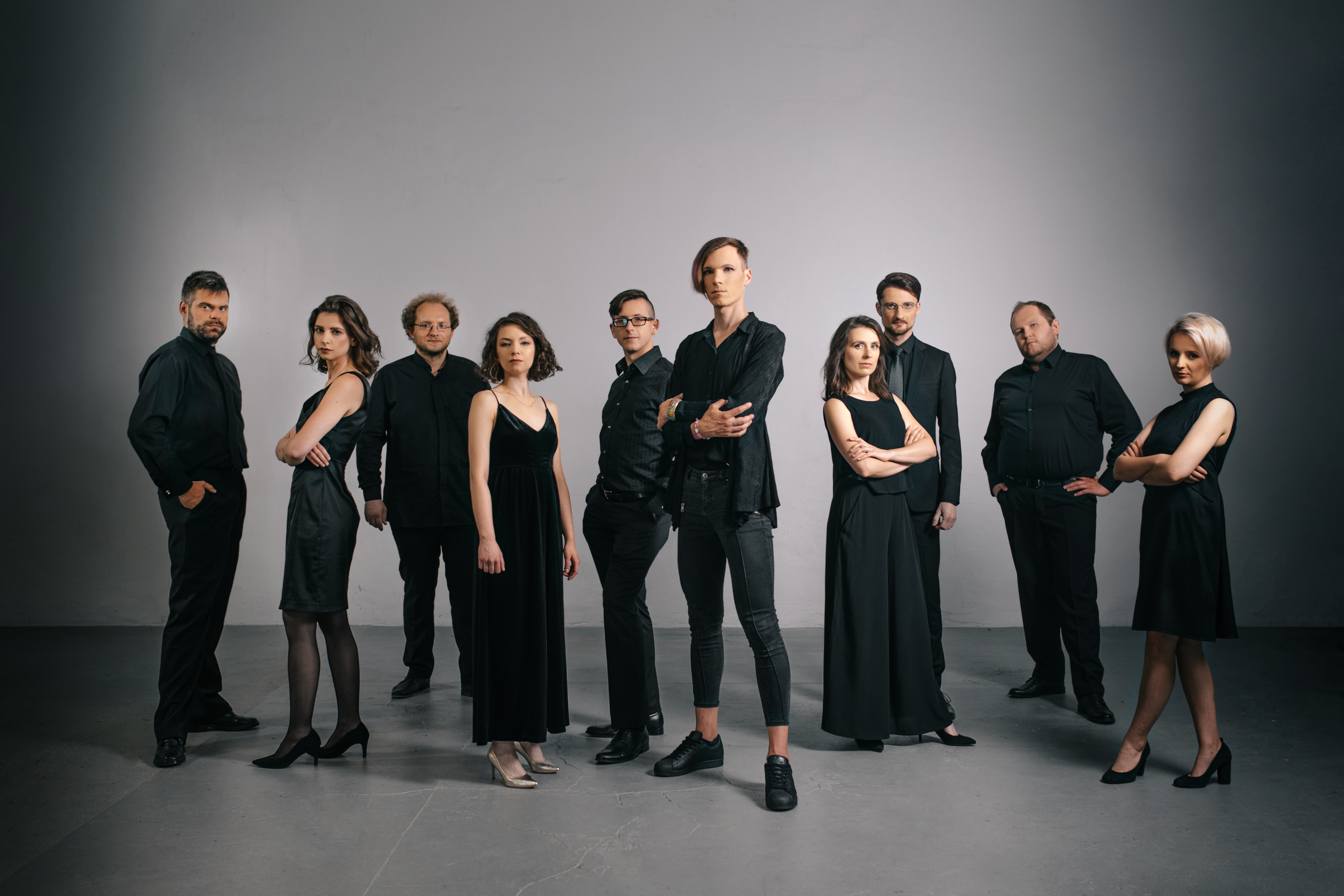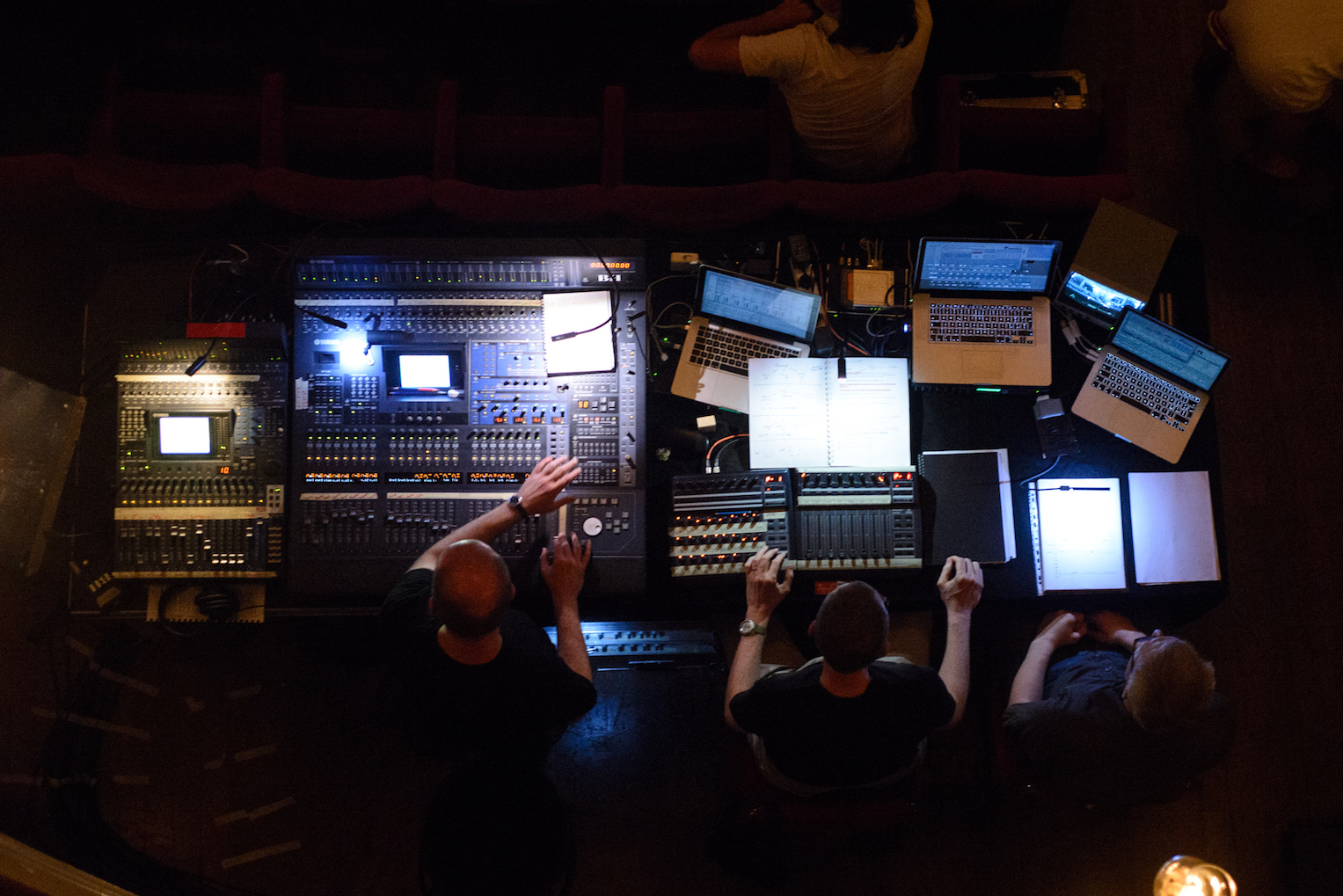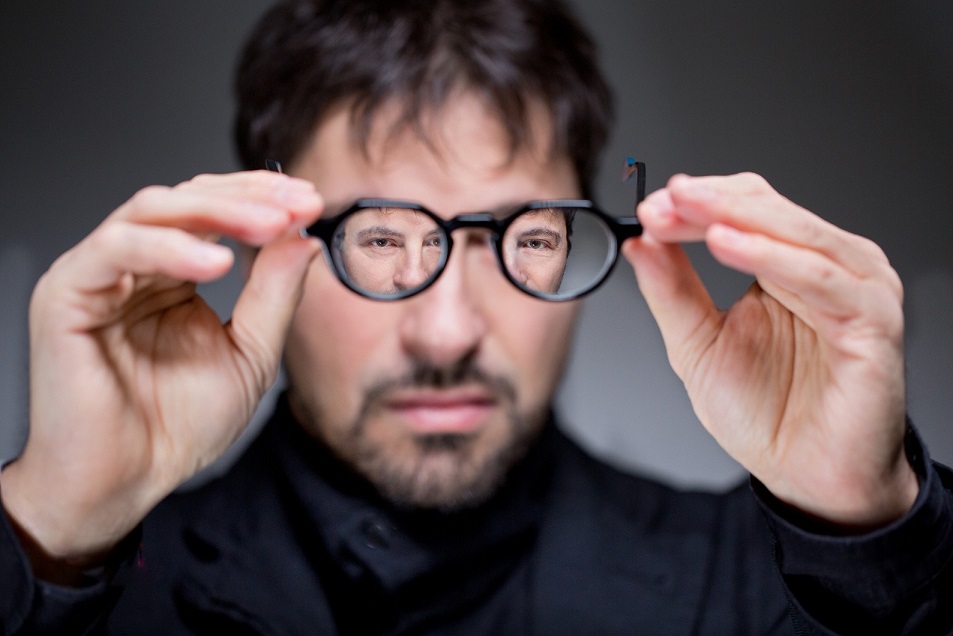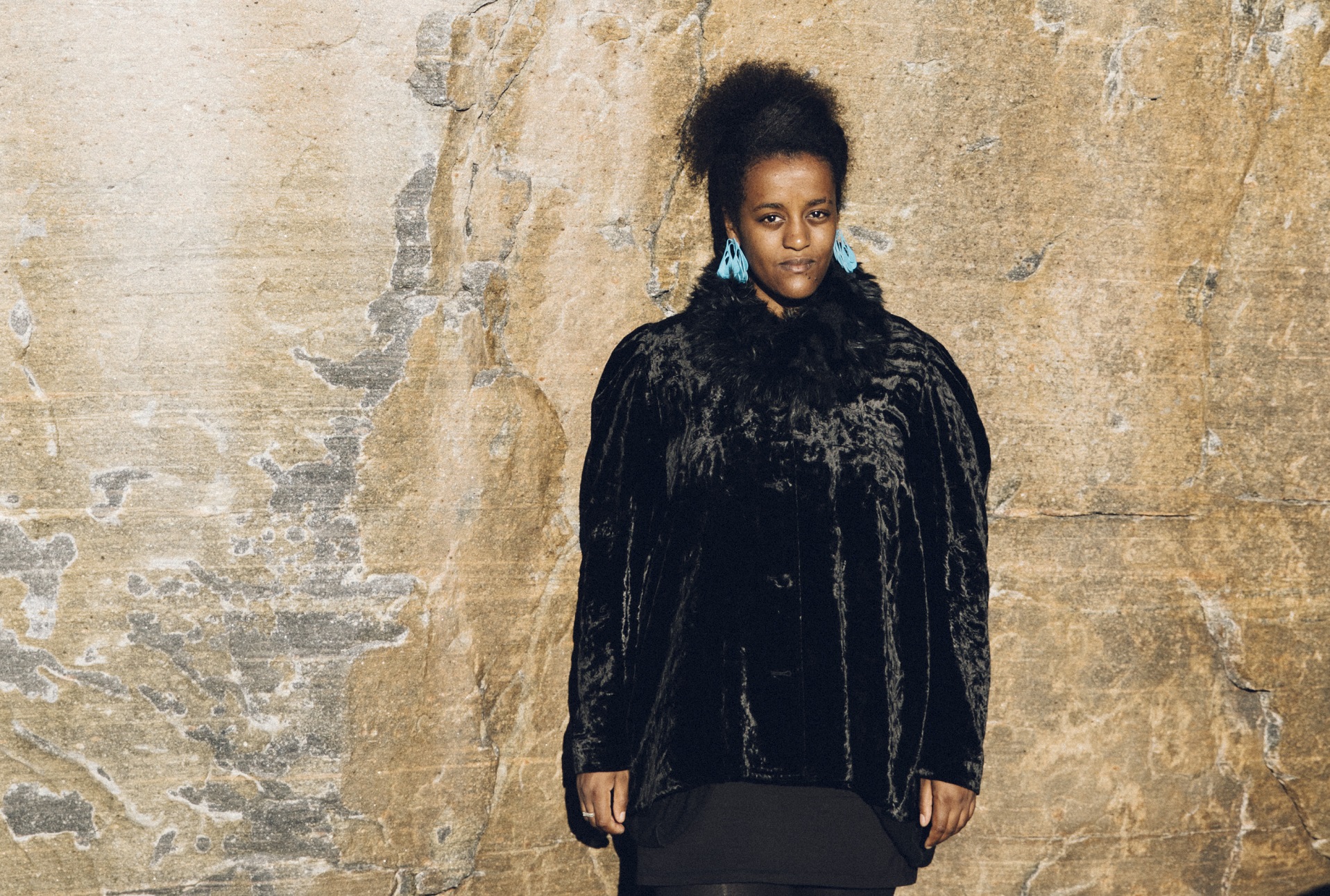65th Warsaw Autumn
CONNECTIONS
– is the watchword of this year’s, 65th edition of the ‘Warsaw Autumn’. We work as a team, bringing together the efforts of performers, programmers, and organisers. Connections are constructive, in defiance of the engineering of social divisions. We are with Ukraine and its artists. We present music that is not indifferent to the struggle with life’s hardships and solitude, brought about both by large-scale processes and by everyday life.
TEAMWORK / COMMUNITY / IDENTITY
Nearly twenty chamber ensembles from all over the world, including Bastarda, the European Workshop for Contemporary Music, NFM Leopoldinum Orchestra, BIT20, Spółdzielnia Muzyczna contemporary ensemble (last year’s winner of the Ernst von Siemens Music Prize), Ensemble for New Music Tallinn, Talea Ensemble, Schallfeld Ensemble, Tempo Reale, Kwartludium, the Chopin University Modern Ensemble, proMODERN, NeoQuartet, Hob-beats Percussion Group, Kwadrofonik, Radical Polish Arkestra, Match Match Ensemble, Ulysses Percussion Ensemble (in collaboration with members of Les Percussions de Strasbourg), the Peter Evans – Sam Pluta duo, and the Theatre of the Homeless. This, however, is not all…

Spółdzielnia Muzyczna, photo by Joanna Gałuszka
GREAT ORCHESTRAS – SYMPHONIC MUSIC RETURNS
After a two-year hiatus, full-scale symphony orchestras return. At the inaugural concert – the Sinfonia Varsovia and Ensemble OMN – New Music Orchestra under Szymon Bywalec, in Gérard Grisey’s complete cycle of Les espaces acoustiques. During the final concert – the Warsaw Philharmonic Orchestra (and soloists) under Vimbayi Kaziboni present the Polish premiere of Francesco Filidei’s Tre quadri as well as three premieres of pieces for orchestra and electronic media by Sam Pluta, Alla Zagaykevych, and Rafał Ryterski.
MUSIC MAKERS
Composers and authors present with their works at this year's Warsaw Autumn Festival: James A.-McEwan, Katarina Aleksić, Georges Aperghis, Rafał Augustyn, Bastarda, Franck Bedrossian, Michael Beil, Oscar Bettison, Pierluigi Billone, James Black, Wojciech Błażejczyk, Jeffrey Arlo Brown, Corelius Cardew, Krzysztof Cybulski, Henrik Denerin, Szábolcs Esztényi, Peter Evans, Lucas Fagin, Francesco Filidei, Bohdana Frolyak, Gérard Grisey, Aleksandra Gryka, Kararina Gryvul, Georg Friedrich Haas, Hashtag Ensemble, Paweł Hendrich, Sarah Hennies, Sofia Jernberg, Pierre Jodlowski, Dominik Karski, Malika Kishino, Yair Klartag, Anna Korsun, Aleksander Kościów, Martyna Kosecka, Andrzej Krzanowski, David Lang, George E. Lewis, Liljana Matičevska, Hugo Morales Murguía, Sarah Nemtsov, Olga Neuwirth, Sam Pluta, Żaneta Rydzewska, Rafał Ryterski, Scanner (Robin Rimbaud), Bohdan Sehin, Kazimierz Serocki, Tomasz Sikorski, Michał Silski, Alvin Singleton, Jacek Sotomski, Anna Sowa, Miroslav Srnka, Tomasz Strojecki, Lubawa Sydorenko, Monika Szpyrka, Paweł Szymański, Ewa Trębacz, Agnieszka Widlarz, Sławomir Wojciechowski, Krzysztof Wołek, Wolna Kooperatywa Jesiennego Maratonu, Iannis Xenakis, Arash Yazdani, Mioko Yokoyama, Artur Zagajewski, Alla Zagaykevych i Agata Zubel.
CONDUCTORS AND SOLOISTS
Conductors and music directors appearing at this year’s ‘Warsaw Autumn’ include James Baker, Rüdiger Bohn, Szymon Bywalec, Christian Danowicz, Leonhard Garms, Christian Karlsen, Vimbayi Kaziboni, Lilianna Krych, Julia Kurzydlak, Rémi Schwartz, Arash Yazdani, and Hubert Zemler. Solo parts will be performed by Maciej Frąckiewicz, Gośka Isphording, Adam Kośmieja, Leszek Lorent, Rafał Łuc, Michał Sławecki, Małgorzata Walentynowicz, Artur Zagajewski, and Rafał Zalech, among others.
THE FESTIVAL IN NUMBERS
36 music events, 26 premieres, 18 works commissioned by the ‘Warsaw Autumn’ and other Polish or foreign institutions. The Festival programme includes compositions by 67 composers, 28 of whom are Polish or otherwise connected with Poland.
COUNTRIES, CULTURES, COMMUNITIES
Apart from works by composers from Poland and Western Europe, the North: Ensemble for New Music Tallinn, a work by Henrik Denerin, and a performance by the Norwegian ensemble BIT20. The East (our neighbours and more remote countries): faces of Ukrainian music, works by Japanese women composers – Malika Kishino and Mioko Yokohama. The South (again, close and more distant): Miroslav Srnka, Francesco Filidei, Pierluigi Billone, James Alexandropoulos-McEwan, and Tempo Reale. Both Americas: compositions by Sam Pluta, Alvin Singleton, and Lucas Fagin, performances by Talea Ensemble, and Vimbayi Kaziboni as the conductor of the final concert. Together with other artists from many other countries of the world, they map out an intercultural and intercontinental itinerary, replete with musical signs, types of narration, and ideas.

Tempo Reale, photo by Mario Carovani
UKRAINE
Present with particular respect for the effort undertaken by composers during Putin’s brutal war waged on Ukraine’s nation and culture. Works by Katarina Gryvul, Anna Korsun, Lubava Sydorenko, Bohdan Sehin, Bohdana Frolyak, and Alla Zagaykevych.
THE FOCUS: RAFAŁ AUGUSTYN, FRANCESCO FILIDEI, GÉRARD GRISEY, AND SAM PLUTA
The Festival’s special focus on: Rafał Augustyn with the music spectacle Verbalia III, presented by Spółdzielnia Muzyczna contemporary ensemble and proModern vocal sextet; Francesco Filidei settling accounts with the piano concerto genre in a project commissioned jointly by the ‘Warsaw Autumn’ and ‘Milano Musica’ festivals as well as Casa da Música in Porto; Gérard Grisey, in a complete, spectacular, nearly 90-minute-long performance of Les Espaces acoustiques by two orchestras (the Sinfonia Varsovia and OMN) and soloists including Rafał Zalech; and the US composer-improviser Sam Pluta, featured both in the series ‘Warsaw Autumn Hits the Club’, in a duo with Peter Evans, and during the final concert in a piece for orchestra and electronic media.

Filidei Francesco, photo by Olivier Roller
IT'S NOT JUST CONCERTS
Apart from concerts, there are events representing a different kind of dramaturgy: Dialogue Zone – A Chamber Players’ Marathon – a more than 5-hour-long meta-concert at ATM Studio; Olga Neuwirth’s Die Stadt ohne Juden – music for an archival silent film, performed by the Norwegian BIT20 ensemble; a programme dedicated wholly to Andrzej Krzanowski’s accordion cycle of Reliefs, as interpreted by Maciej Frąckiewicz, with an appearance by percussionist Leszek Lorent; works by Cornelius Cardew and David Lang performed by the Theatre of the Homeless, Match Match Ensemble, and Radical Polish Arkestra conducted by Lilianna Krych, under the music direction of Hubert Zemler; the second year of the cycle ‘InSitu/City’, events held in public space – music in Stalowa Street’s tenement yards in Warsaw’s district of Praga Północ, in relation to the architectural details of these magic spots, which function as hubs of small urban communities’ lives (curator – Ania Karpowicz); Wojciech Błażejczyk’s Stringphony 3.0, an installation presented at the National Ethnographic Museum; meetings with composers and performers, and composition workshops.
LOOKING BACK: REFERENCES
We recall the following works and artists: Gérard Grisey and his cycle of Les Espaces acoustiques; Andrzej Krzanowski’s Reliefs for solo and chamber accordion; Kazimierz Serocki’s Continuum, written for Les Percussions de Strasbourg, presented this time by young members of Ulysses Percussion Ensemble and a soloist of the legendary Strasbourg collective; the Polish premiere of Tomasz Sikorski’s Intersections for four percussions, Iannis Xenakis’ Jalons and two movements from Pléïades (Métaux and Peaux); two chapters from Cornelius Cardew’s The Great Learning.
EVENTS WITH PARTICULAR COMMUNITY FOCUS
The already mentioned concert-performance of music by Cornelius Cardew and David Lang; Dialogue Zone – A Chamber Players’ Marathon; ‘InSitu/City’ events in Stalowa Street; Olga Neuwirth’s music for the 1924 film Die Stadt ohne Juden, long considered lost but rediscovered and reconstructed in 2015. The latter prophetic work about how Jews were blamed for a crisis in a utopian state can serve today as a warning against social stigmatisation and exclusion.
‘WARSAW AUTUMN HITS THE CLUB’
A cycle hosted once again by the Pardon, To Tu club. Phenomena of diverse cultural provenance, which demonstrate surprising similarities and topicality, entering into dialogue with one another. Featured artists: Krzysztof Cybulski, Sam Pluta, Peter Evans, Sofia Jernberg, and Scanner (Robin Rimbaud).

Sofia Jernberg, photo by Saga Sigurdardottir
THE ‘LITTLE WARSAW AUTUMN’
The 12th edition of the ‘Little Warsaw Autumn’ festival, addressed to the youngest audience, is described by Anna Kierkosz, curator of this cycle, as a presentation of various connections between contemporary music and other spheres, in particular the visual arts (abstract and performative painting, installations), theatre (including puppet shows and theatre of movement), dance, improvisation, and traditional music. They ultimately lead us to the music, which identifies with emotions and through which more emotions can be experienced. When programming this year’s Festival events for our youngest listeners, we have also aimed to inspire them to discover and develop all kinds of positive and creative connections, not only in the realm of music. This is one of the key competences for both the present and the future.
FRINGE EVENTS
These include: a radio drama by Radio Kapitał; the spectacle Finnegans Wake with music by Wojciech Blecharz (staged by Wrocław’s Polski Theatre in the Underground), and PWM Edition’s promotion of a website dedicated to Andrzej Krzanowski.
APPLIED CONNECTIONS
Commissions for new works – financed from the funds of the ‘Warsaw Autumn’, the Adam Mickiewicz Institute, ZAiKS Society of Authors, Warsaw Philharmonic, the ‘Milano Musica’ festival and Casa da Música in Porto, ‘Transit’ festival, Danish Composers’ Society, KODA Kultur, as well as the ULYSSES Network. The Festival is organised in partnership with ZAiKS Society of Authors, the Chopin University of Music in Warsaw, the Adam Mickiewicz Institute, PWM Edition, the National Ethnographic Museum, in cooperation with Warsaw Philharmonic and Polish Radio Channel Two. Overall funding: the Ministry of Culture and National Heritage, the Capital City of Warsaw, ZAiKS Society of Authors, STOART Association of Performing Artists, the Austrian Cultural Forum in Warsaw, the French Institute in Poland, EEA and Norway Grants, as well as the European ULYSSES Network, which brings cultural institutions together in the framework of the European Union’s programme ‘Creative Europe’. We are extremely grateful to all the above!
LIVE AND ONLINE
We are forced to give up live concert streaming due to external circumstances. We hope to meet you live, establishing connections as direct as possible. Indirectly, we are on the air thanks to broadcasts by the Festival’s Internet Radio, our website, Facebook and Instagram profiles, as well as live and other broadcasts on Polish Radio Channel Two.
SACRUM PROFANUM
We are uniting with the Sacrum Profanum Festival. Both our festivals focus on the same: artistic and cultural mindfulness to the changing world. Changing for the better thanks to human creativity, but also for the worse where we lose our reference points, sense of common responsibility, and readiness to counteract. Sacrum Profanum is twenty years old. This year’s edition of the Cracow festival focuses on endangered species in all senses of the term. Thus, we extend our common space of resonance, both thematically and in calendar terms, inviting you to join us at the two festivals jointly running 2 through 24 September, with a few days’ break to gather our thoughts and find new energy.
OLGIERD PISARENKO
This year’s ‘Warsaw Autumn’ is dedicated to the memory of Olgierd Pisarenko, who died on 22nd July 2022. He co-created the Festival for twenty years as a member of the Repertoire Committee and (for eight years) – as its chair.
INVITATION TO THE FESTIVAL
We invite you to experience the events of the 65th ‘Warsaw Autumn’ together. Let us join forces in, through, and thanks to new music.
Jerzy Kornowicz
Director of the Festival
About Warsaw Autumn
Warsaw Autumn (Warszawska Jesień) is a festival with a long tradition and a true witness to music history. It is the only contemporary music festival in Poland on an international scale and with an international status. For many years, it was the only event of this kind in Central and Eastern Europe. Nonetheless, it remains a living organism: it thrives as much as Polish cultural funding and the general condition of music allow. The Festival is organised by the Polish Composers’ Union. The Repertoire Committee, an independent body appointed by the Union’s Board, determines the program of each edition of the festival. Warsaw Autumn is, therefore, an international and nonprofit festival of a nongovernmental association.
Warsaw Autumn was created in 1956, during the thaw that followed years of Stalinist dictatorship. Even though the government quickly abandoned the democratisation course, the Festival continued without interruption (with two exceptions) during the entire Communist era: its finances were secured by the state (up to this day, it is primarily finances from public funds). In the 1990s, Poland’s new economic and social situation threatened the financial stability of Warsaw Autumn. With a new model and procedures of culture financing developed since, the subsequent editions of the Festival may now be planned in a much more predictable way.
Paradoxically, the communist era was a golden age for Warsaw Autumn. The Festival was an obvious crack on the Iron Curtain, an island of creative freedom in a sea of compulsory Socialist realism. Here, the most varied forms of artistic invention were possible. That created a sense of general freedom of expression, and the Fesrtival was seen as a form of political protest. Audience attendance reached 120 per cent; Warsaw Autumn made the headlines, and there were several hundred international guests, both from the East (for Soviet citizens, it was the only opportunity to experience new currents in music) and the West. The government tolerated this situation, presenting itself as a liberal patron of the arts. Another important goal for the authorities when allowing the Festival was to demonstrate the superiority of socialist music over the bourgeois art of capitalist countries. Of course, there was censorship, and a permanent threat of the authorisation being annulled, especially under pressure from the Soviet government, who considered avant-garde music and the entire atmosphere of Warsaw Autumn as ideological diversion. In order to pursue our artistic endeavours, it was often necessary to use a ruse.
“This edition of the Festival,” Krzysztof Baculewski wrote about the 16th Warsaw Autumn in 1972 in a timeline published for the Festival’s 50th edition, “again verges on the political. The Ministry of Culture and the Arts orders for the work of Edison Denisov to be deleted from the programme, as the composer is not well seen in the Soviet Union. As we know, such orders could not be discussed, so ‘in exchange,’ we got the Piano Concerto of the Soviet Composers’ Union secretary general for life and member of the Supreme Soviet, Tikhon Khrennikov, with the composer as soloist. This concert is partly boycotted by the Warsaw public; the younger audience, especially youngsters and students, do attend to have a laugh. As a sign of protest, the Warsaw Autumn Repertoire Committee withdraws its members’ names from the programme book. And Denisov’s work would be played soon anyway—but this time, he appears under the maiden name of his wife, Gala Varvarin…”
Regardless of the independent image that continued to attract audiences, music in the 1960s and 1970s abounded in new and exciting events, rousing the interest of the general public. After years of isolation from the new musical currents and phenomena in Western Europe following World War II and Stalinist isolationist politics, Poles were now decided to make up for lost time, learning the works of Schoenberg, Berg, Webern, Varèse, and even Bartók or Stravinsky through the festival. Warsaw Autumn was also an opportunity to follow the latest avant-garde experiments of those years: Boulez, Nono, Dallapiccola, Maderna, and Cage. Composers, performers, critics, and musicologists from the West were eager to come to Warsaw, too: out of curiosity about the countries on the other side of the curtain and simply because Warsaw Autumn gained worldwide recognition as one of the most important places for new music.
Warsaw Autumn’s modernist image was established almost from the very beginning: conservative music remained marginal in the programmes. The Festival retains an open formula, and aims at presenting a variety of phenomena and tendencies typical for the latest music: from Webern-inspired radicalism derived (Lachenmann, Ferneyhough, Hollinger), through currents that refer to the music of historical or traditional cultures, up to audio-art and sound installations. Warsaw Autumn is often termed—appropriately—as pluralistic and positively eclectic. This is necessary in order to familiarise Polish audiences with the latest developments in the world of music. For Polish musicologists and journalists, Warsaw Autumn’s programme books are the primary source about modern music. The Sound Chronicle, a full set of recordings that is published after each festival, performs a similar function (until 1999, these chronicles included Polish music only; since the Aimard plays Ligeti record in 2000, the series was extended to international music).
Today, one of the main goal of Warsaw Autumn’s creators—to familiarise the Polish audience with the classic works of the twentieth century (i that were seen as such already at the dawn of the Festival)—has of course been fulfilled. Yet there remain gaps regarding the classics of the second half of the twentieth century. For example, Stockhausen’s Gruppen was performed for the first time in Poland only at the 2000 Warsaw Autumn festival, and Boulez’s Répons as late as 2005. The festival’s two other objectives, however, are timeless: to present new music from Poland and abroad.
From all the above, an important aspect of Warsaw Autumn emerges: the new and newest trends are presented in the context of modern classics. The Festival’s identity is that of an event that shows modernity in its relation to tradition. Moreover, the Festival is a debate, a forum for different tendencies and opinions. Finally, the phenomenon of Warsaw Autumn is that it performs its mission continuously, year after year. It is not a one-off event, a news campaign, or a themed concert. The essence of Warsaw Autumn is that it has stayed—for nearly sixty years—the same. And yet it is continuously renewed, following the evolution of art, cultural situation, and overall reality.
Contemporary music in Poland has long functioned on somewhat odd terms; it has been considered hermetic, abstract, and specialist. Hence the challenge undertaken by the organisers, in the new socioeconomic reality of Poland, to overcome that stereotype. Indeed, Warsaw Autumn’s audience continues to grow, sometimes overflowing the concert venues. Importantly, the average age is low. The public is increasingly interested in more refined, complex music. In the last decade or so, a young musical elite has emerged that is not afraid of “difficult” music, and wants to stand out from the mass consumers of pop culture. These people are looking for something new and different; for the exotic in the broad sense of the word. But they also look for music that enriches the listener. In today’s world, dominated by the internet, contemporary music has moved away from the ridiculous or the indifferent of yesterday. A large number of new festivals, initiatives, and projects are created around new music. The question today is no more whether contemporary music makes sense but what it really is—whether modern music can only make sense in the historical context of the Western tradition of serious art music.
All obstacles and difficulties notwithstanding, Warsaw Autumn remains a creative event with first-class achievements and an international reputation. It is Warsaw’s cultural flagship. Warsaw Autumn has cooperated with leading Polish cultural institutions including the National Philharmonic, Grand Theatre–Polish National Opera, Polish Radio, Polish Television, Adam Mickiewicz Institute, National Audiovisual Institute, and National Institute of Music and Dance, as well as, significantly, the embassies, cultural institutes and foundations of the many countries whose music is represented at the festival. When Warsaw Autumn has a national or regional theme, the cooperation is very close, such as in 1998 with a Scandinavian programme supported by the Nordic Council of Ministers, Pierre Boulez’s 80th anniversary with French cultural institutions on the 80th anniversary of the composer’s birth, the Polish–German Year in 2005, and the North Rhine–Westphalia Cultural Season in Poland in 2011.
The atmosphere of the Festival has certainly changed in recent years, compared to the early 1990s and earlier. Our concerts have expanded to different venues across Warsaw in search of new audiences: apart from traditional venues such as the Warsaw Philharmonic, Music Academy, theatres, and churches, Warsaw Autumn now also take place in less “classic” places: sports halls, old factories, modern buildings, and clubs. New colour is being added to the Festival by young people, who prevail in the audience. They are not professional musicians or artists: they just participate in culture. As to the music itself, it increasingly often features an electroacoustic layer. Concerts require complex systems of sound distribution. Composers treat space as an important factor of form. They introduce video projections and new technologies. A good example is the audiovisual orchestra concert presented during the 48th Warsaw Autumn Festival. The incredible scenery of the Highest Voltage Hall’s “futuristic” facilities, wonderfully illuminated by Polish Television, became an additional element of the show.
But don’t be misled by the spectacular character of these big projects. This is the way contemporary composers think and write. This is a feature of the present. Keeping up with this trend, Warsaw Autumn consistently maintains its credibility as a place where independent and disinterested art, free from commercial aspects, is cultivated. Every guest at Warsaw Autumn concerts can be confident to be hearing the best and latest from the world of new music.
Tadeusz Wielecki
Festival Director from 1999 until 2016